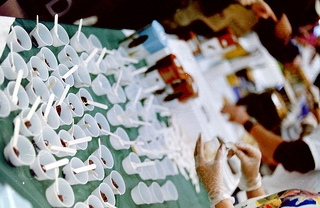
I have had several clients over the past couple of years execute retail- focused national sampling programs. Activations at retail events are usually about one thing: Sales! When multiple SKUs of a brand are available for sampling, nine times out of ten, the Account Manager wants to know what SKUs will provide the highest sales. We can help with that.
How to identify the best-selling SKUs
We developed a method for determining what sample types turn into the greatest sales. It’s called the Samples-To-Sale Ratio (original, I know) and it is calculated like this:
Sample Type/Type Sales = Samples/Sales Ratio
For example, you are offering two varietals of wine for sampling – Cabernet and Chardonnay. You have distributed 100 of each and sold 50 bottles of Cabernet and 25 bottles of Chardonnay. The Samples-To-Sale Ratio would be as follows:
- Cabernet = 100 samples distributed/ 50 bottle sales = 2.0 samples distributed to make 1 sale
- Chardonnay = 100 samples distributed/ 25 bottle sales = 4.0 samples distributed to make 1 sale
So, what variety of wine should the Account Manager tell his or her sampling teams to distribute more of to increase sales? If you chose Cabernet, you chose correctly!
Lower is better with the Samples-To-Sale Ratio.
The goal is not to give out samples. It is to turn samples into sales. The Samples-To-Sales Ratio measures the success of the sampling goal.
A Couple of Tips
- This works best if you track samples and sales by type or SKU. That way you aren’t double-counting sales.
- Run your overall Samples-To-Sale Ratio first (all SKUs and their sales). That way you have a baseline of what you are doing overall. Then you can compare the different sample types to a baseline.
- If you are sampling at a mix of retail and special events, I recommend you don’t include the special events, unless you have product available for immediate purchase. The Sample-To-Sale Ratio will be skewed if you include samples distributed at events where product isn’t available for purchase.
Photo Source: https://www.flickr.com/photos/travisjuntara/
